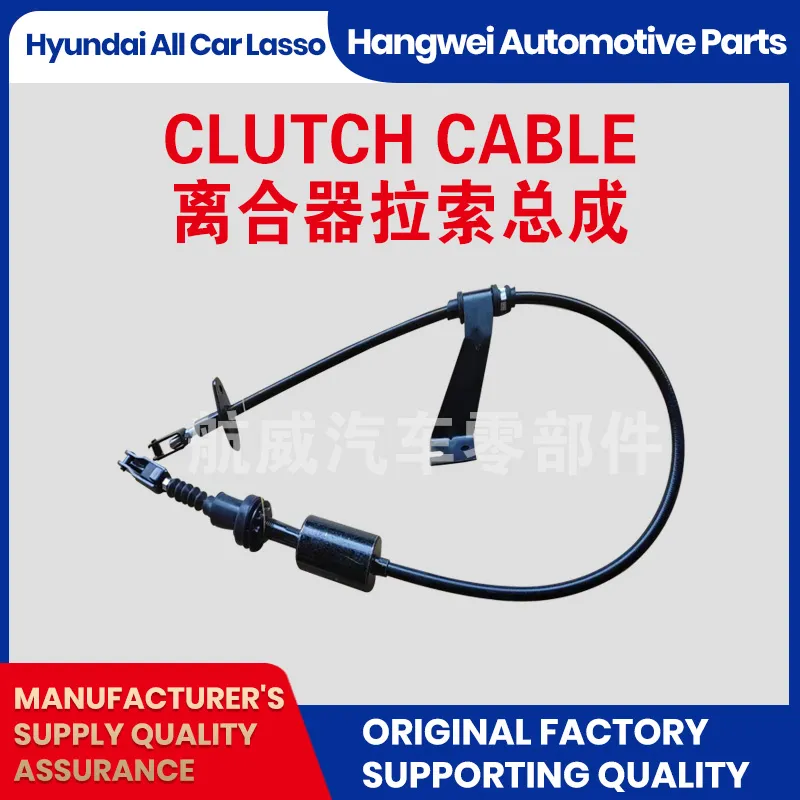throttle and throttle cable
Understanding Throttle and Throttle Cables Essential Components in Vehicle Performance
Throttle control is a critical aspect of any vehicle's performance, influencing how power is delivered from the engine to the wheels. At the heart of this system lies the throttle and the throttle cable, which work in tandem to ensure that drivers have precise control over their vehicle's speed and acceleration. This article will delve into the function, importance, and maintenance of throttle systems and cables in vehicles.
What is a Throttle?
The throttle is a valve that regulates the amount of air that enters the engine’s combustion chamber. It plays a crucial role in determining engine power output and efficiency. By adjusting the airflow, the throttle controls fuel intake, thereby affecting the engine's power and performance. In modern vehicles, the throttle is often electronically controlled, employing sensors and actuators to provide instantaneous feedback and adaptability to driving conditions.
The Throttle Cable's Role
The throttle cable is the physical connection between the accelerator pedal and the throttle body. When a driver presses the accelerator pedal, the throttle cable pulls open the throttle valve, allowing more air into the engine and, subsequently, increasing engine power. This mechanical connection has traditionally been utilized in vehicles with internal combustion engines, providing a straightforward and reliable means of throttle control.
In the past, throttle cables were purely mechanical, linking the pedal to the throttle directly. However, with advancements in automotive technology, many modern cars have transitioned to electronic throttle control (ETC) systems. In ETC systems, the connection is not physical; instead, sensors detect the position of the accelerator pedal and communicate this information to an electronic control unit (ECU) that adjusts the throttle position accordingly.
Benefits of Electronic Throttle Control
throttle and throttle cable

Electronic throttle control offers several advantages over traditional throttle cables. Notably, it enhances responsiveness, allowing for quicker adjustments to engine power based on driving inputs. This technology can also integrate with other systems, such as stability control and traction control, to optimize vehicle performance and safety.
However, even with the advent of electronic systems, throttle cables still play a role in many older vehicles and specific applications, such as motorcycles and some performance cars, where direct mechanical feedback is preferred.
Maintenance of Throttle Cables
Proper maintenance of throttle cables is essential for ensuring smooth vehicle operation. Over time, throttle cables can become frayed, stretched, or corroded, leading to performance issues such as sticking or failure to respond to the accelerator pedal. Regular inspection and replacement of worn cables can prevent these problems.
When checking the throttle cable, look for any signs of wear or damage, such as kinks, fraying, or rust. Ensuring that the cable is properly lubricated is also important, as this reduces friction and wear, promoting smooth operation. In instances where performance issues arise, such as delayed acceleration or irregular throttle response, it may be necessary to adjust the cable tension or replace it altogether.
Conclusion
In summary, the throttle and throttle cable are integral components that significantly impact vehicle performance. Understanding their function and the technology behind them can help drivers appreciate the complexity of modern automotive systems. Whether you’re driving a classic car with a traditional throttle cable or a modern vehicle with electronic throttle control, maintaining these systems is essential for safety and performance. Regular inspections and proper care will ensure a responsive and enjoyable driving experience for all types of vehicles.
-
Workings of Clutch Pipe and Hose SystemsNewsJun.04,2025
-
The Inner Workings of Hand Brake Cable SystemsNewsJun.04,2025
-
The Secrets of Throttle and Accelerator CablesNewsJun.04,2025
-
The Hidden Lifeline of Your Transmission Gear Shift CablesNewsJun.04,2025
-
Demystifying Gear Cables and Shift LinkagesNewsJun.04,2025
-
Decoding Clutch Line Systems A Comprehensive GuideNewsJun.04,2025
